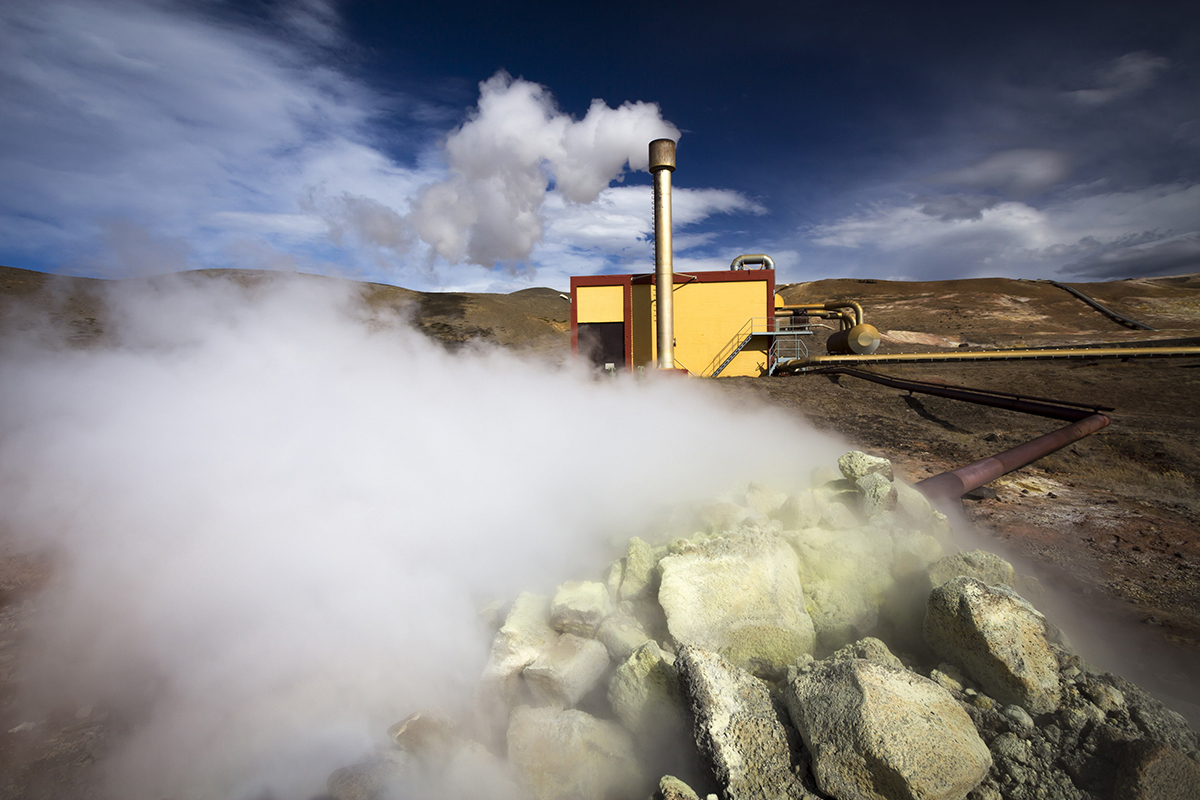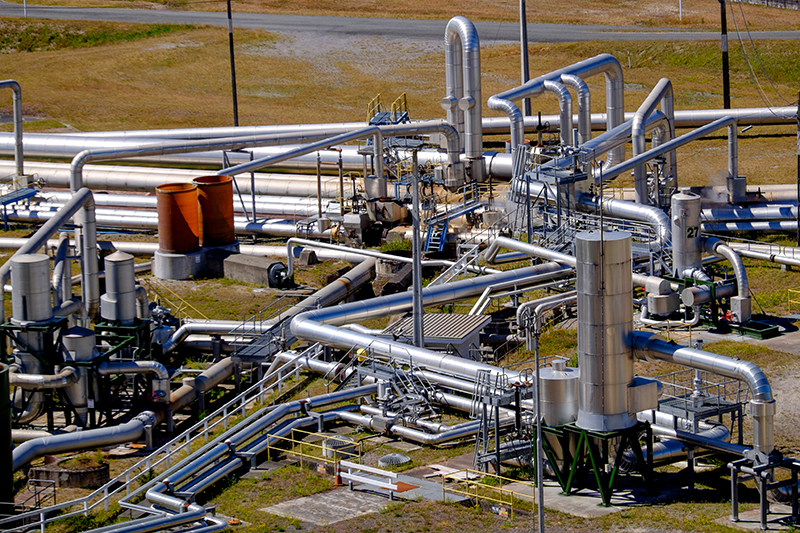Geothermal

Published: Friday, 09 June 2023
Continuing on our types of renewable energy articles, we are looking at Geothermal energy. Able to heat, cool, and generate electricity, geothermal energy has been increasing in popularity over the years and is one of the leading renewable energies in the market currently. In this article we will be looking at what Geothermal is and the advantages and disadvantages it has as we look to the future of renewable energy.
What is Geothermal energy?
Geothermal is the thermal energy that comes from the Earth’s crust. The pressure and temperature from the inner layers of the Earth can cause some rock of the mantle to melt and behave plastically (alteration of the rock but does not rupture the rock itself.) This then leads to the mantle to move upwards heating up the layers of earth above it (oceanic crust and continental crust.) The temperatures of the mantle boundary can reach well over 4000°C. Geothermal energy can be dated back to the stone age when hot springs were used as baths, as space heating from the ancient Roman times, and in recent times, geothermal power is used to generate electricity used from the energy created by geothermal.
How it works?
To convert geothermal energy into something we can use, we need a power plant to safely and securely extract the energy to create into power. The main product they need for these power plants to work is steam. The steam is generated by drawing the fluid from the reservoirs underground and will bring it to the surface and generate the steam. The steam will then begin to rotate a turbine that will generate electricity. There are three main types of geothermal power plants technology: dry steam, flash steam, and binary cycle.
Dry Steam
The oldest of plant systems, dry steam power plants are used when steam is directly drawn to a turbine, once the steam has been used it will be put back into the reservoir. Due to the rare natural occurrence of this happening, this is why these power plants are very rare.
Flash Steam
The most common of the power plants, flash steam requires the fluids to travel at high pressure to then enter a low-pressure tank. This rapid change of pressure will cause some of the fluid to turn into a vapor, the process is quite rapid which is why its known as a ‘flash’ steam. The vapor then will spin a turbine to charge the generator and create electricity.
Binary-Cycle
Binary-cycle power plants are used for lower temperature geothermal resources. These allow for geothermal plants to be built in more locations. The big difference between the other plants is that fluid from the earth never comes in contact with turbine units, instead, the fluids will pass through a heat exchanger creating a secondary or ‘binary’ fluid which will turn into vapour and drive the turbine to generate electricity.

Advantages
With the future of our energy being renewable, we need to identify what is good about them other that it being a renewable source (which is pretty great!) Here are three advantages that can get us looking forward to the future with geothermal energy.
Reliable
A great thing about geothermal energy is how easy it is to calculate how much energy you will generate from it due to how it doesn’t fluctuate compared to other renewable energy sources (solar and wind.) This gives companies the ability to predict how much power output they are able to generate from a geothermal plant to a high level of accuracy. With geothermal not relying on the weather to get the best out of it energy output from the power plants can be used at a constant rate of 24/7.
Evolution
In comparison to most of the other renewable energies, there is still a lot that people are learning regarding geothermal. This means that new technology is being created to improve the energy process to make it run more effectively and efficiently. This is also great as it allows us to identify current disadvantages with geothermal and adapt the technology to help mitigate these issues.
Silent Energy
While functioning, geothermal power plant emits very little noise. This helps in avoiding noise pollution from the power plants and it applies to both to large power stations and a domestic system. This is great when thinking about the local population that may have issues with the power plant if it was generating too much noise.
Disadvantages
Knowing what’s good about something is great but being able to identify the weaknesses of something can offer useful insights into developing and improving their technology. Here’s a few disadvantages that comes with geothermal energy.
Land Requirements
The main disadvantage with geothermal energy is how location specific it actually is. A power plant will need to be built in areas where the energy is accessible which results in a large portion of energy that we will not be able to use because of this. Some countries will have geothermal energy readily available to begin building a power plant such as Iceland as they have many hot springs that could be converted into power plants. An issue with this however, is that hot springs are a popular tourist attraction for Iceland which will help generate the country a lot of money. Removing these springs would help in creating jobs but, it could lead to a drop in tourists visiting the country.
Depletion of geothermal sources
Although Geothermal energy is a renewable energy source, for it to be fully sustainable it needs to be properly managed too truly last. In comparison to solar and wind energy sources, geothermal energy is more give and take, the fluid used to generate the electricity needs to be pumped back into the reservoirs faster than we are taking it out for it to be truly sustainable. The other issue with this is that over time, some locations might naturally cool down over time. Depending on how much the location has cooled down there is the possibility of switching to a binary-cycle power plant but if it has cooled down too much it would become unusable. Researching is currently ongoing to source geothermal energy from magma which is a fully non-depletable source of geothermal energy.
Earthquakes
Earthquakes are a potential threat that can be triggered by geothermal energy power plants. The majority, if not all geothermal power plats will be built near a tectonic plate boundary. The process of how we harvest geothermal energy requires us to dig to get the energy, some more advanced power plants will also allow water to flow into the planets crust. Both these methods can cause instability in the ground and could cause the risk of an earthquake. The chance is very slim, but it is important to be aware that it could happen.
Geothermal energy has the potential to be our leading source of renewable energy. The consistent reliability of 24/7 use gives the edge in comparison to wind and solar energy. However, it is important to avoid the overuse of geothermal energy, poor management of the plants could lead to us depleting our energy sources and heavily impacting our electrical generation for the future where fossil fuels are no longer usable.
To learn about all types of renewable energy, check out our article covering them here.

